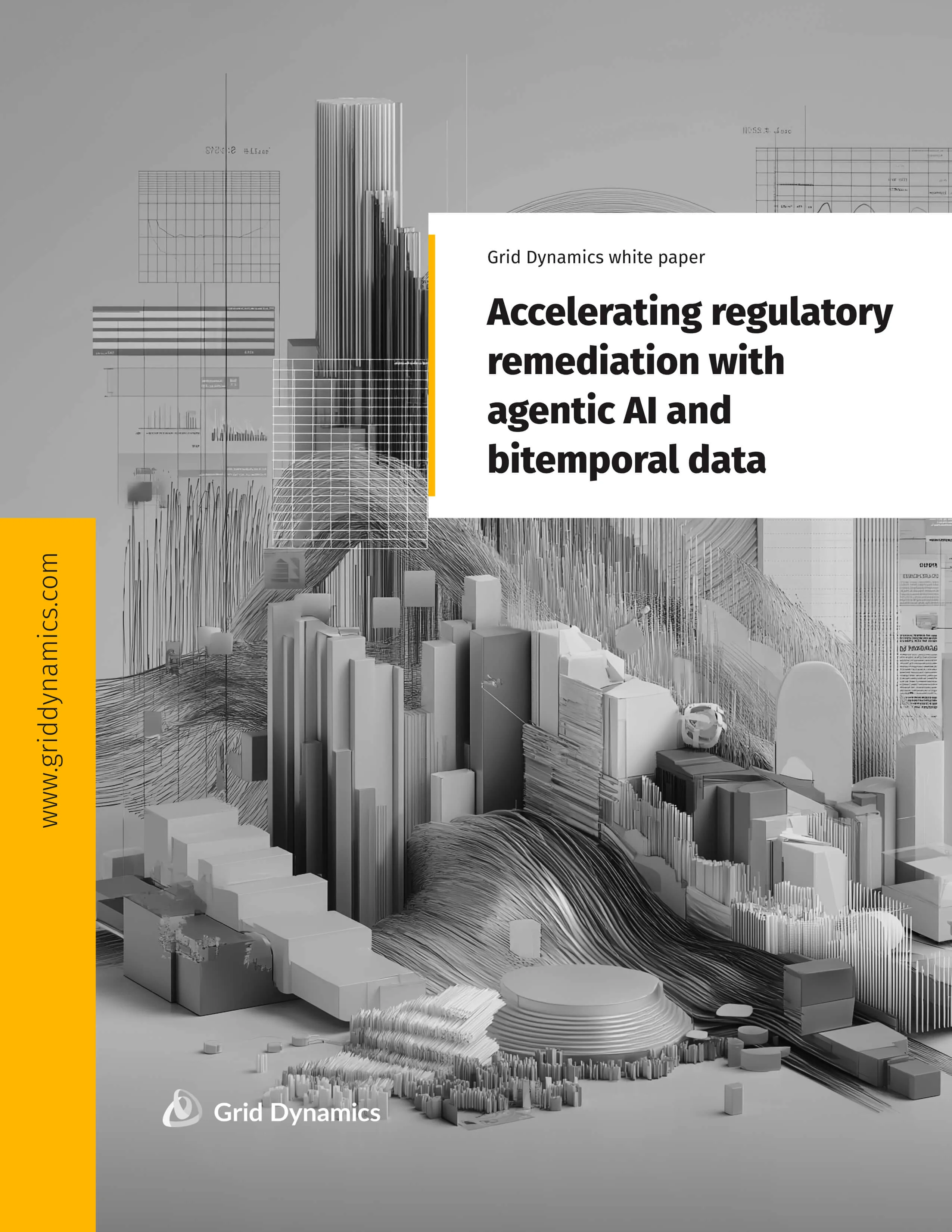Get the White Paper

An Intellyx analyst guide
By Jason Bloomberg and Eric Newcomer, Intellyx
Bitemporal data separates when something happened in your business from when your systems recorded it. For financial services firms managing regulatory reporting, audit requirements, and data quality challenges, this architectural approach provides forensic precision without relying on costly data copies or time-consuming lineage reconstruction.
Traditional databases overwrite records when corrections arrive or late data surfaces. A bitemporal data for regulatory compliance system preserves valid time (when the trade executed, the payment cleared, or the position changed) and transaction time (when your system captured or corrected that information). This dual-temporal design lets you reconstruct historical states at any point and track every amendment without losing the original record.
Download the white paper for in-depth details and actionable bitemporal data for regulatory compliance strategies.
Your team will learn practical implementation patterns for schema design, timestamps, and as-of joins that avoid write contention and reduce operational overhead. The guide addresses specific problems:
- Recreating derivatives trades as they appeared at execution versus after corrections;
- Detecting spoofing patterns across trade intent histories;
- Handling late-arriving payments data for fraud detection; and
- Answering regulators’ most critical forensic question: what did you know and when did you know it?
or data architects and engineers, this white paper provides vendor-neutral explanations of the pitfalls of applying bitemporal patterns with database technologies, while supporting compliance, back-testing, and operational recovery.
If your organization struggles with data quality in regulatory compliance reporting, spends heavily on duplicated historical data, or lacks the ability to replay business processes with accuracy, bitemporal data compliance offers a straightforward technical solution.
Download this guide to understand how to implement bitemporal data for regulatory compliance, avoid common pitfalls, and build data systems that meet audit requirements while enabling deeper analytics and faster incident response.
Tags
You might also like

Wealth managers, asset managers, and banks face mounting pressure when it comes to regulatory remediation—the process of responding quickly and accurately to inquiries from regulators like FINRA and the SEC. These demand answers to complex questions about past transactions, communications, and deci...
Structured products are tailored financial instruments that combine traditional securities like bonds or stocks with one or more derivative components, offering investors customized risk-return profiles that standard investments can't match. Currently, the industry is at a technological...

Financial services face significant risks from cybercriminals due to insecure cloud and DevOps practices, leading to data theft, financial losses, and reputational damage. Download our whitepaper to discover effective strategies for securing your ecosystem, from identification and protection to res...

The financial services industry is one of the fundamental pillars of the global economy. Given the broad spectrum of functions this sector performs, financial institutions have to stay on the edge of modern tech innovations, provide personalized experiences to their customers, and enhance their ope...
As an enterprise leader, you’ve likely seen countless AI prototype demos over the last few years promising empty buzzwords like “transformation”, “efficiency”, and “competitive edge”. But how many of those prototypes actually work in production? Over the past decade, multiple AI hype cycles ha...
Running agent-based systems across your enterprise comes with tough problems. The main ones are keeping costs down, scaling up fast, and making sure nothing breaks when things go wrong. This white paper gets into the real challenges that come up when teams move from simple agent pilots to a ful...

Download this white paper for comprehensive details on how large-scale applications can overcome web application security risks and evolving web threats, including AI-driven attacks, supply chain vulnerabilities, and compliance pitfalls. It goes beyond traditional checklists for web applicati...







